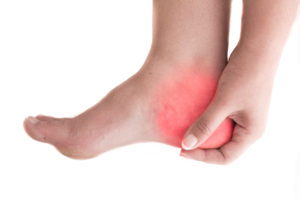 Your abductor hallucis (from hallux, meaning ‘big toe’) is a muscle that spans your arch, beginning at the inner aspect of your heel and attaching to the inner side of your big toe. It helps to move the big toe sideways (like when you splay your feet to grip onto the ground), supports your arch and foot with every step you take, and supports a massive amount of weight (among more technical functions that help).
Abductor hallucis tendinopathy (AHT) describes damage to the abductor hallucis muscle from overloading. This condition is often overlooked because its symptoms closely resemble those of plantar fasciitis, a common cause of pain in the arch of the foot.
Your abductor hallucis (from hallux, meaning ‘big toe’) is a muscle that spans your arch, beginning at the inner aspect of your heel and attaching to the inner side of your big toe. It helps to move the big toe sideways (like when you splay your feet to grip onto the ground), supports your arch and foot with every step you take, and supports a massive amount of weight (among more technical functions that help).
Abductor hallucis tendinopathy (AHT) describes damage to the abductor hallucis muscle from overloading. This condition is often overlooked because its symptoms closely resemble those of plantar fasciitis, a common cause of pain in the arch of the foot.
What causes abductor hallucis tendinopathy?
AHT is typically an overuse injury. When the tendon is overloaded from excess or repetitive strain and pressure, micro-tears and damage results and painful symptoms and inflammation begin. This overuse may be caused by:- Abnormal foot biomechanics
- Flatter (pronated) foot type
- Unsupportive footwear
- A sudden increase in physical activity or the intensity of activity
- Particular activities that strain the arch such as climbing stairs
- Trauma to the insertion of the AHT at the heel, such as jumping down from a high surface
- Faulty training technique
- Increased weight
What are the symptoms?
Symptoms typically include:- Heel pain
- Pain along the outside of the foot through the arch
- Pain on standing first thing in the morning
- Pain on standing after rest
How is it treated?
Treatment begins with relieving the painful symptoms by following the PRICE principles (protection, rest, ice, compression and elevation). The focus is then on facilitating the healing and repair of the tendon, and reduce the likelihood of future recurrence. This may involve:- Orthotics to reduce pressure and strain away from the AHT and correct any abnormal foot biomechanics including reducing pronation
- Footwear assessment to ensure the shoes are helping and not hindering recovery
- Stretching tight muscles that may have contributed to overloading of the tendon
- Strengthening weak muscles, including the AHT after is has healed
- Activity modification to reduce the load on the AHT from high-stress activities until it has healed
- Taping/strapping to temporarily reduce strain on the AHT while symptoms settle and repair begins








